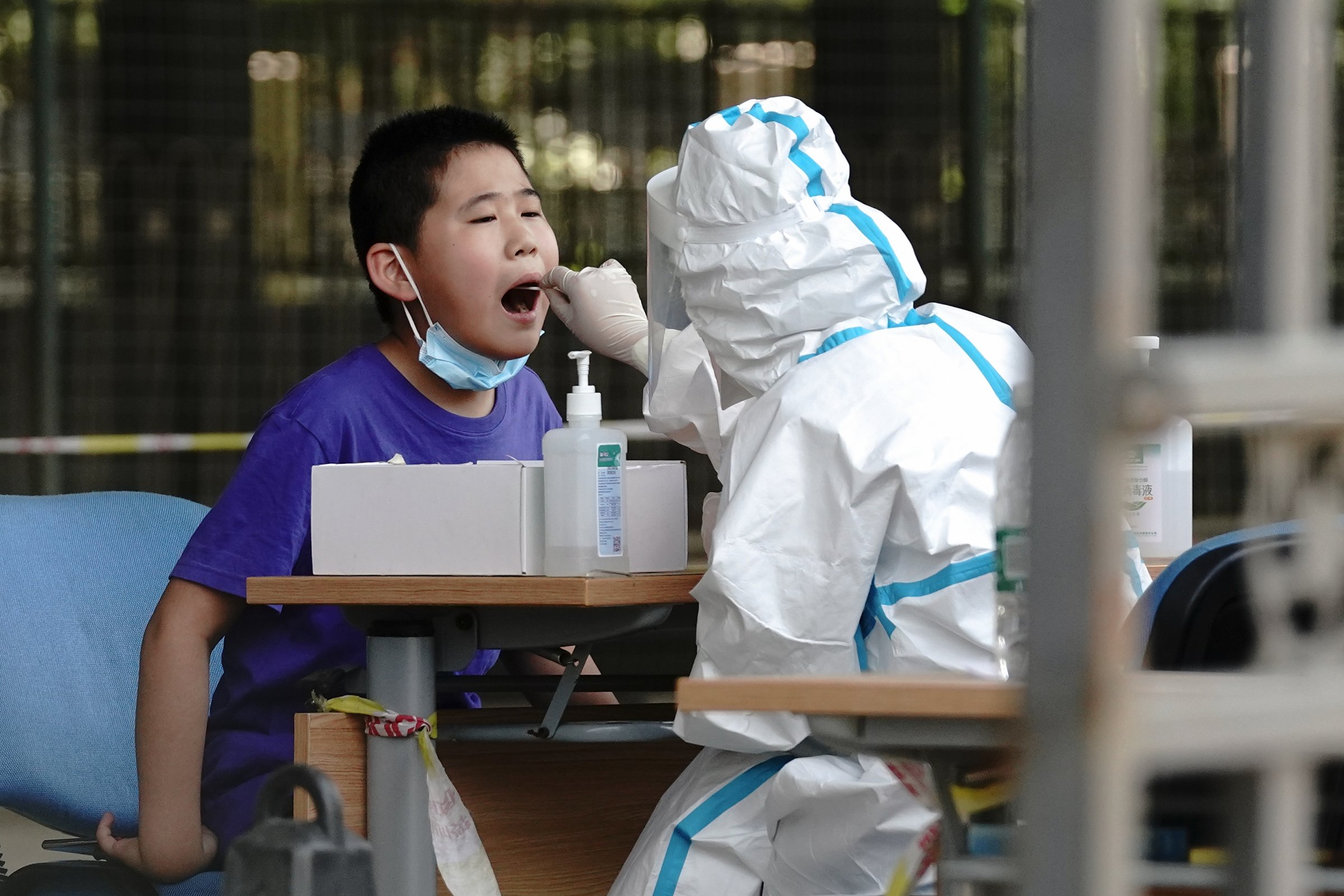
China appears to have gotten a second wave of COVID-19 under control following an outbreak at a sprawling Beijing produce market last month that led to at least 328 new cases and the partial shutdown of the capital.
On Wednesday, Beijing reported just one new confirmed case — as well as two asymptomatic cases — following an aggressive campaign of testing around the Xinfadi wholesale food market in southwestern Fengtai district, where a new outbreak was detected June 11. While that broke Beijing’s run of 56 days without any new local infections, no new deaths have been recorded as a result.
“Beijing has set a clear example that China will ward off a new wave of infections — domestic or imported — through a prompt and refined epidemic control response,” Zhang Wenhong, director of infectious diseases at Shanghai’s Huashan Hospital, told state broadcaster CCTV.
More than 7 million residents of the city of 22 million were tested for COVID-19 following the resurgence, according to authorities, while schools, bars and beauty parlors were shuttered in a bid to stem the virus’s spread. A forensic approach to contact tracing discovered cases in 47 streets across 11 districts of the city, according to the Center for Disease Control and Prevention in Beijing, while more than a dozen residential compounds were placed on strict lockdown.
Fearing that this new outbreak is a more contagious strain of the virus than the one that emerged in the central city of Wuhan in December, new rules state than anyone who has had close contact with an infected person must now quarantine for 28 days.
That may seem like an overly cautious requirement given only 5% of infected people have incubation periods longer than 14 days, but it’s characteristic of a nation founded on putting the collective over the individual — not least when outbreaks at the heart of government challenge the ruling Communist Party.
Given the virus’s infectiousness, and the large proportion of asymptomatic cases, more outbreaks across China are inevitable, says Ben Cowling, a public health expert at Hong Kong University. “This cat and mouse will go on for weeks or months until we figure out a more sustainable way to deal with it that doesn’t involve mass testing and lockdowns,” he says.
Still, the contrast in leadership is striking when compared with the U.S. While Chinese officials talked of “wartime mode” and “explosive” situation at the “battleground” by Xinfadi market, U.S. President Donald Trump said Wednesday the virus would “just disappear” as the U.S. saw a daily record high of more than 52,000 new infections.
“I don’t think the virus is going to disappear,” says Cowling. “That’s nonsense. But [Trump] did finally say that wearing masks would be useful, so that’s in his favor.”
Negative implications
There are, however, negative implications to China’s uncompromising response. In their haste to paint the Xinfadi outbreak as imported from abroad, officials suggested that supplies of salmon from Europe may have been the source after the virus was discovered on a filleting board. This led hotels, restaurants and supermarkets to jettison existing stocks of seafood and freeze imports despite the government’s own scientists saying its “not possible” for the virus to survive on live or frozen salmon.
The arbitrary restrictions on salmon exports are a significant business blow to Chile, Norway, the Faroe Islands, Australia and Canada, from where China imports about 80,000 tons of chilled and frozen salmon annually.
Such draconian bans can also be detrimental to public health, as they encourage nations and processing plants to hide disease outbreaks and allow them to silently spread unchecked. That is why in 2005 the WHO’s International Health Regulations were updated to prohibit any knee-jerk travel or trade restrictions in response to health scares. In recent days, meat packing plants in the U.S. have been accused of covering up COVID-19 outbreaks for fear of economic blowback.
“Historically, this has been a very big problem,” says Adam Kamradt-Scott, associate professor specializing in global health security at the University of Sydney. “The source of outbreaks needs to be thoroughly investigated and the scientific links established before countries put in place restrictive measures.”
More Must-Reads From TIME
- The 100 Most Influential People of 2024
- The Revolution of Yulia Navalnaya
- 6 Compliments That Land Every Time
- What's the Deal With the Bitcoin Halving?
- If You're Dating Right Now , You're Brave: Column
- The AI That Could Heal a Divided Internet
- Fallout Is a Brilliant Model for the Future of Video Game Adaptations
- Want Weekly Recs on What to Watch, Read, and More? Sign Up for Worth Your Time
Write to Charlie Campbell / Shanghai at charlie.campbell@time.com